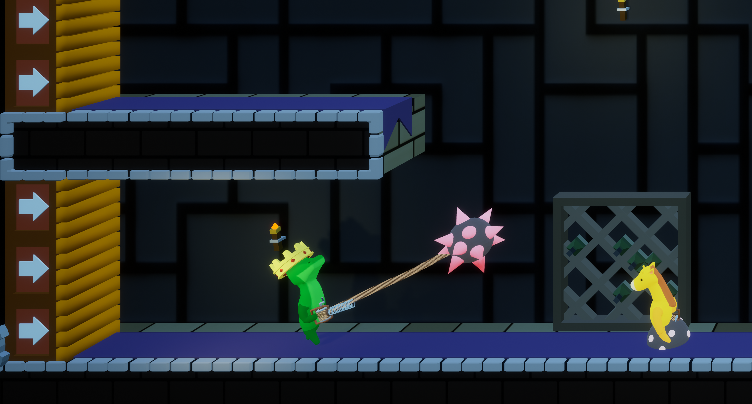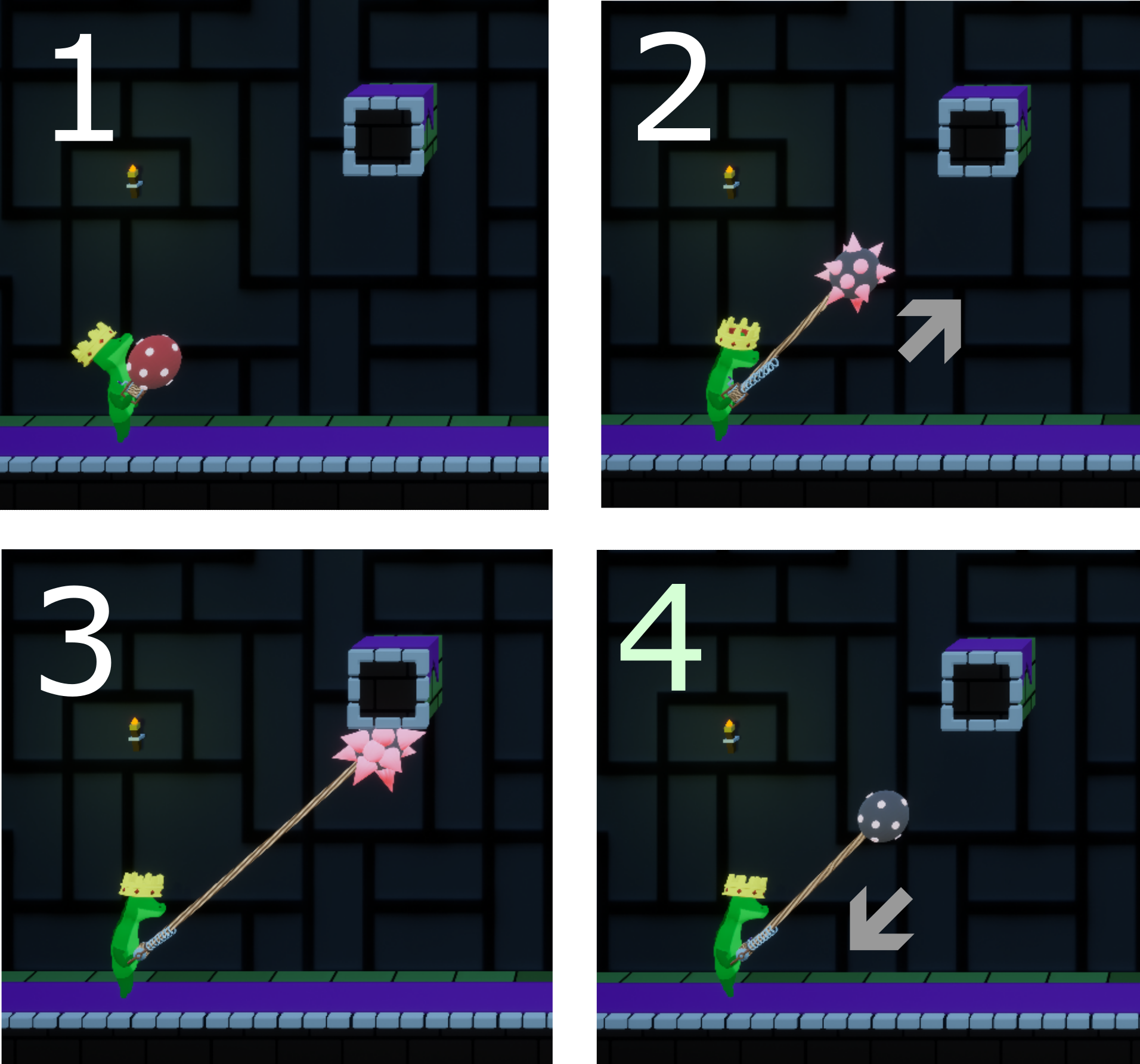Game Design
I have designed 2 commercial games, and helped with the design on another. On top of that I have 3 prototypes and about 20 of my 33 game jams games that I did some or all of the design work on.
Below is one of the design problems I have tackled on my indie game Flailure. It might help to see some gameplay footage before hand, you can set that on my projects page.
Design Problem Example
Flailure is a 4-player party game where the objective is to hit other players with your spring powered flail launcher:
The Problem: After finishing the prototype, I took it to playtesters and noticed a big issue. After playing for a while we noticed the players doing the best were using the same strategy. Players would “Turtle” by hiding in dead ends and waiting for other players to attack them:
This style of gameplay slowed down rounds considerably and hurt the fast paced gameplay I was targeting.
Breaking down this problem we found three things incentivizing this behavior:
Players gained points for being the last player alive, so were incentivized not to fight until only one player was left.
There were good turtling spots in most of the levels.
The strategy had little to no openings to counter, making extremely effective.
I decided it was worth it to remove all of these incentives and designed solutions to each.
Solution 1: Players gained points for being the last player alive
Players would get 1 point for being the last survivor on a level, this was the only source of points. To fix this I changed it to give points on kills as well, so in a 4 player game, surviving gave 1 point but you could get 3 more from kills.
Result: This change had a lot of positive effects, it reduced turtling but it also made players more aggressive in general. It also rewarded players that got kills but still died, letting more players feel like they won a round.
Solution 2: Levels have a lot of turtling spots
Levels had a lot of dead ends and pockets players could turtle in and only have to deal with players in one direction. Even with other changes that will always be an advantage.
I worked with the level designer to get more of these spots changed to have multiple openings.
Before:
After:
Result: This made turtling a less effective strategy by forcing players to guard both sides. It also improved the flow of levels, giving players more options to move around.
Solution 3: Turtling has no counter
Even with the other changes, turtling is still the best strategy in a 1v1 because of how hard it is to get past. This solution needs a little more context on the game to explain.
Before this change, the flail launcher worked like this:
You charge up the flail
The flail shoots forward with spikes out
The flail sticks to things
The player presses a button to disconnect it, and it returns to you with the spikes out.
Example:
With this set of rules the flail is always dangerous. There is no safe time to approach a turtled player and you can only attack from one direction.
To make a bigger opening, I changed step 4 so that the spikes retract when pulling back in.
Example:
Result: Players are now vulnerable after they miss a shot, this opened up a lot of counter-play. Turtling players can no longer shoot the flail without consequence and other players can have a shot at beating the to the draw or baiting out a shot.
Between, this and the other changes, high level play was no longer dominated by turtling and game pace stayed steady at most skill levels.





